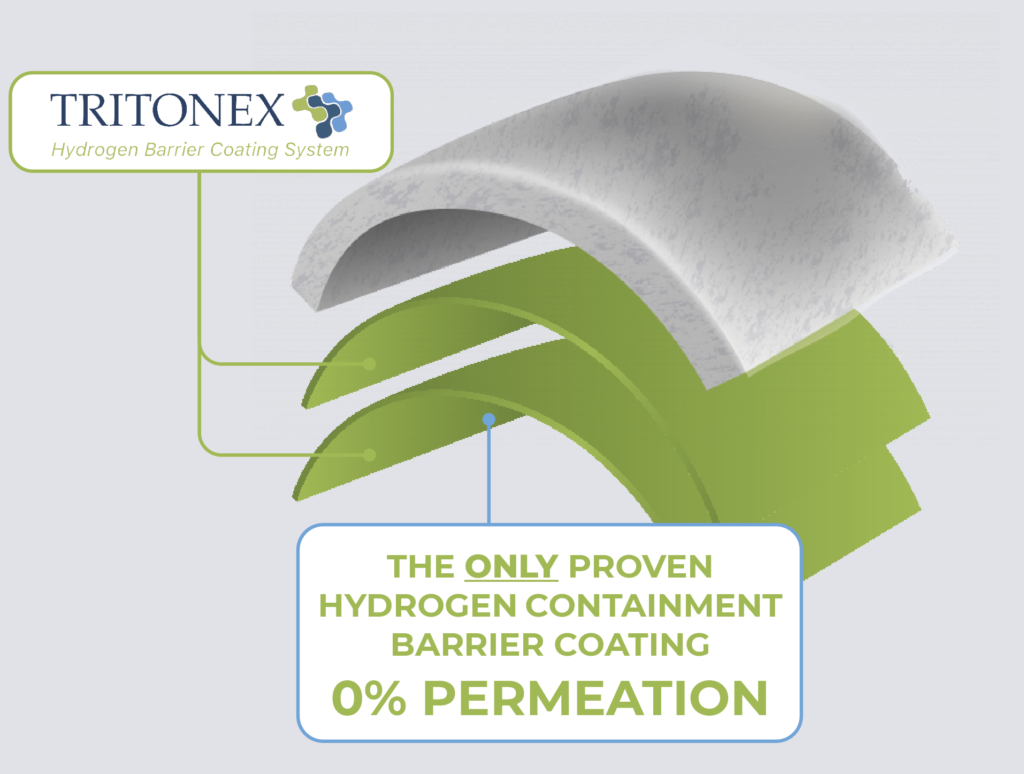Hydrogen, often heralded as a game-changer in the quest for cleaner energy, holds enormous potential to transform various sectors, including transportation, industry, and power generation. However, despite its promise, the widespread adoption of hydrogen has been hindered by significant challenges, particularly concerning its distribution. These challenges, including hydrogen permeation and embrittlement, directly affect the future of the facilities management sector in the UK.
This article was first published in FM Director Magazine.
The Promise and Pitfalls of Hydrogen Energy
Hydrogen, the most abundant element in the universe, offers a tantalising prospect as a clean energy carrier. It produces only water vapour when used as a fuel, making it exceptionally environmentally friendly.
Additionally, hydrogen can be produced using various methods, including electrolysis powered by renewable energy sources, natural gas reforming with carbon capture and storage (CCS), and biomass gasification, offering versatility in production methods.
However, the use of hydrogen has its challenges. Its small molecular size makes it susceptible to permeation, a process where hydrogen molecules can escape through materials like steel, posing significant challenges for transportation and storage. Furthermore, this permeation process can lead to embrittlement of steel, jeopardising the structural integrity of infrastructure components.
Permeation and Embrittlement: The Hidden Threats
Hydrogen permeation is not just an issue of energy loss; it also places pressure limitations on hydrogen gas due to exponentially higher losses at higher pressures. This limitation complicates large-scale hydrogen storage and distribution. Moreover, the embrittlement of steel used in pipelines, containers, and valves is a silent menace that can result in costly maintenance, repairs, and, in some cases, catastrophic failures.
For the facilities management sector in the UK, where safety, reliability, and efficient energy use are paramount, these challenges are of critical concern.
We need Innovative Solutions
In light of these challenges, companies like Triton Hydrogen have been working diligently to address the issues of hydrogen permeation and embrittlement. Triton Hydrogen has developed a coating system, Tritonex Barrier Coating System, which mitigates these challenges.
This coating can be applied to both new and existing infrastructure, creating an impermeable seal that helps prevent hydrogen permeation and removes embrittlement risks. The potential benefits are far-reaching, particularly for the facilities management sector in the UK.
Relevance to Facilities Management
For facilities managers in the UK, grappling with the safe and efficient use of hydrogen, Tritonex offers hope. Here’s how:
- Enhanced Safety: By reducing the risk of hydrogen leakage and the associated embrittlement of infrastructure, Tritonex enhances the safety of hydrogen usage within facilities. This translates to lower safety hazards and reduced downtime.
- Cost Savings: Facilities managers can benefit from decreased maintenance costs and extended infrastructure lifespans. The mitigation of embrittlement risk means fewer replacements and repairs, resulting in significant cost savings.
- Efficiency: Efficient energy use is a core concern for facilities management. Minimising hydrogen losses due to permeation means more efficient energy utilisation, aligning with sustainability goals and cost-efficiency.
The Path Forward
While hydrogen distribution and storage challenges remain, innovative solutions like Tritonex provide a glimpse of a future where hydrogen can be harnessed as a clean and efficient energy source.
Facilities management in the UK, with its commitment to safety and sustainability, stands to gain significantly from advancements in hydrogen technology.
The journey towards a cleaner, greener future powered by hydrogen is ongoing. Tritonex and similar technologies pave the way for a more sustainable energy landscape. While the facilities management sector faces unique challenges, it also has a unique opportunity to embrace these innovations and play a pivotal role in the hydrogen revolution.
As the hydrogen industry continues to evolve, it’s clear that collaboration between technology innovators and facilities managers will be crucial in realising the full potential of hydrogen as a clean energy source. We move one step closer to a more sustainable and efficient energy future by addressing permeation and embrittlement challenges head-on.
As the hydrogen industry evolves, Tritonex stands as a shining example of how innovation can surmount even the most formidable challenges, bringing us closer to a sustainable and clean energy future.
For more information about Triton Hydrogen and the Tritonex Barrier Coating System, please get in touch.


